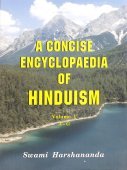Mahayoga, Mahāyoga, Maha-yoga: 3 definitions
Introduction:
Mahayoga means something in Buddhism, Pali, Hinduism, Sanskrit. If you want to know the exact meaning, history, etymology or English translation of this term then check out the descriptions on this page. Add your comment or reference to a book if you want to contribute to this summary article.
In Hinduism
Shaktism (Shakta philosophy)
Source: Google Books: ManthanabhairavatantramMahāyoga (महायोग) is the name of the Samayā associated with the sacred seat of Pūrṇagiri, according to the Manthānabhairavatantra, a vast sprawling work that belongs to a corpus of Tantric texts concerned with the worship of the goddess Kubjikā.

Shakta (शाक्त, śākta) or Shaktism (śāktism) represents a tradition of Hinduism where the Goddess (Devi) is revered and worshipped. Shakta literature includes a range of scriptures, including various Agamas and Tantras, although its roots may be traced back to the Vedas.
Yoga (school of philosophy)
Source: ORA: Amanaska (king of all yogas): A Critical Edition and Annotated Translation by Jason BirchMahāyoga (महायोग) refers to a “great Yoga”, according to the Niśvāsakārikā verse 32.149cd-152.—Accordingly, as the Lord teaches the Yoga of detachment to the Goddess: “O goddess, listen to the supreme secret [teaching] and its unsurpassed Siddhi. It has no form, no colour and no meditation. It is both with and without aspects. It lacks anything through which it can be acted upon and it has no location. [This] great no-mind yoga [i.e., amanaska-mahāyoga] is not a division of [mantra] recitation, is free from form and colour [but] gives all Siddhis”.

Yoga is originally considered a branch of Hindu philosophy (astika), but both ancient and modern Yoga combine the physical, mental and spiritual. Yoga teaches various physical techniques also known as āsanas (postures), used for various purposes (eg., meditation, contemplation, relaxation).
In Buddhism
Tibetan Buddhism (Vajrayana or tantric Buddhism)
Source: WikiPedia: Tibetan BuddhismMahāyoga (महायोग) (lit. “great yoga”) is the designation of the first of the three Inner Tantras according to the nine-fold division of practice used by the Nyingma school of Tibetan Buddhism. Mahāyoga is held to emphasise the generation stage (or “development stage”) of Tantra, where the succeeding two yana, anuyoga and atiyoga, emphasise the completion stage and the synthesis or transcendence of the two, respectively.

Tibetan Buddhism includes schools such as Nyingma, Kadampa, Kagyu and Gelug. Their primary canon of literature is divided in two broad categories: The Kangyur, which consists of Buddha’s words, and the Tengyur, which includes commentaries from various sources. Esotericism and tantra techniques (vajrayāna) are collected indepently.
See also (Relevant definitions)
Starts with: Mahayogapancaratnayashvalayanopayogyadhanaprakarana, Mahayogapancaratne ashvalayanopayogyadhanaprakaranam, Mahayogeshvara, Mahayogeshvari.
Full-text: Mahayogapancaratnayashvalayanopayogyadhanaprakarana, Guhyagarbhatantra, Mayajalatantra, Mayajala, Guhyagarbha, Kriyacara, Drusha, Akniparvata, Varttika, Kinnara, Yatra.
Relevant text
Search found 17 books and stories containing Mahayoga, Mahāyoga, Maha-yoga, Mahā-yoga; (plurals include: Mahayogas, Mahāyogas, yogas). You can also click to the full overview containing English textual excerpts. Below are direct links for the most relevant articles:
Brihad Bhagavatamrita (commentary) (by Śrī Śrīmad Bhaktivedānta Nārāyana Gosvāmī Mahārāja)
Verse 2.2.185 < [Chapter 2 - Jñāna (knowledge)]
The Great Chariot (by Longchenpa)
Part 6 - The divisions of the three inner tantras < [A. Resolving the view]
Part 2d - The empowerments that ripen the ground < [B. The explanation of meditation practice, together with its action of ripening and freeing]
Part 2b - The way of arising of developing and completion < [B. The explanation of meditation practice]
Guhyagarbha Tantra (with Commentary) (by Gyurme Dorje)
16. Mahāyoga and Atiyoga Interpretations of the Guhyagarbha < [Introduction]
1. The rNying-ma School and the Three Inner Classes of Tantra < [Introduction]
7. The Indian historical tradition of the Guhyagarbhatattvaviniścayamahātantra < [Introduction]
The Linga Purana (by J. L. Shastri)
Chapter 55 - The mode of propitiating Śiva < [Section 2 - Pūrvabhāga]
Chapter 7 - The esoteric secret of Śiva < [Section 1 - Uttarabhāga]
Chapter 21 - Eulogy of Lord Śiva < [Section 1 - Uttarabhāga]
Blue Annals (deb-ther sngon-po) (by George N. Roerich)
Chapter 1 - Secret Mantra In Jambudvīpa < [Book 10 - The Kālacakra]
Chapter 4 - Mind Class < [Book 3 - Early translations of Secret Mantra]
Chapter 9 - Phagmodrupa (vi): some bka' brgyud history < [Book 8 - The famous Dakpo Kagyü (traditions)]
Related products
